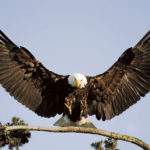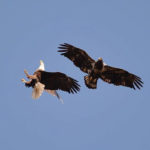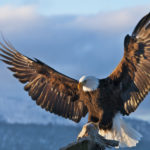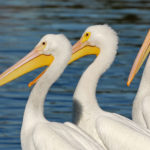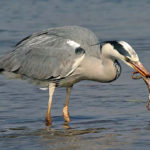Facts about eagles
 January 10 in the US is celebrated the Day of Protection of Eagles (Save The Eagles Day), and we decided to talk about this day and the eagles in general, writing an article dedicated to these magnificent birds.
January 10 in the US is celebrated the Day of Protection of Eagles (Save The Eagles Day), and we decided to talk about this day and the eagles in general, writing an article dedicated to these magnificent birds.
The day of protection of the eagles was originally initiated as a campaign aimed at saving the population of bald eagles, whose species was on the brink of extinction in the XX century. Efforts were not in vain, since in 2007 he was removed from the list of wild animals under threat. The national bird of the USA and the symbol of strength, fearlessness and freedom, the bald eagle was saved, but the future of some other species of eagles is still uncertain, which makes the Eagle Protection Day relevant every year.
- Currently, there are about 60 species of eagles. Most of them live in Eurasia and Africa, but some species can also be found in North and South America, as well as in Australia.
- The vast majority of eagles are carnivorous, but the griffish eagle, a large predatory bird that lives in Africa south of the Sahara, feeds mainly on the flesh of the oil palm fruit.
- The largest eagles in the world (such as the harpy and the Philippine eagle) have a wingspan of more than 250 cm and are known for being able to kill and carry away their prey such as antelope, goat and monkey.
- Among the representatives of most eagle species, females are larger and stronger than males.
- Some eagles, such as a battle eagle, are able to soar in the air for long hours without a single flapping of wings. They do this using the rising streams of warm air.
- Eagles of many species lay only two eggs, and the older and largest chick often kills the younger one as soon as he hatch. Eagles parents do not take any action to prevent him from doing so.
- Steller’s sea eagle, whose adults can weigh more than 9 kg, is the heaviest eagle in the world.
- In the eyes of the eagles, there is a million light-sensitive cells per square millimeter of the retina, which is 5 times greater than that of a human. While the person sees only 3 primary colors, eagles see 5. This adaptation gives the eagles an extremely sharp vision, enabling them to detect even the most well-disguised potential prey from a very long distance.
- The largest known victim of the eagle was a dicker, weighing 37 kg, 8 times the weight of a battle eagle that killed him.
- Most eagles have the most varied diet, but some of them are narrow-headed predators. For example, the Calf eagle almost always eats exclusively Cape dames.
- Being up to 102 cm in length and having a weight of up to 8 kg, the Philippine eagle is one of the largest, heaviest and strongest eagles in the world. Unfortunately, it is also one of the rarest birds, as the species is endangered. The killing of this bird in the Philippines (where it is a national animal), under local law, is punishable with a prison sentence of up to 12 years.
- The largest nest ever built by an animal on a tree was made by a white-headed eagle. It was 4 meters deep, 2.5 meters wide and weighed one ton.
- Eagles are very smart birds. For example, in Greece, golden eagles, to eat a turtle, drop it from a great height onto the stones to break the carapace protecting them.
- Eagles play an important role in many cultures, both ancient and modern. Ancient poets and writers, such as Marc Annaeus Lucan and Pliny the Elder, claimed that the eagles could look directly at the Sun, and that they forced their chicks (eaglets) to do the same. Those who closed their eyes were dumped from the nest. This belief was maintained until the Middle Ages.
- Eagles are an incredibly popular heraldic symbol, being considered the “king of birds” by analogy with the fact that “the lion is the king of beasts.” At least 25 countries have an image of an eagle on their emblems.
- The name of the bald eagle in English, “Bald eagle” (“bald” in translation means “bald”), comes from the outdated meaning of this word, derived from “piebald”, that is, “piebald”, referring to its white head.
- Like horses that can sleep standing, eagles have at their feet a special mechanism that allows them to lock in position, so they can sleep sitting on a branch.


